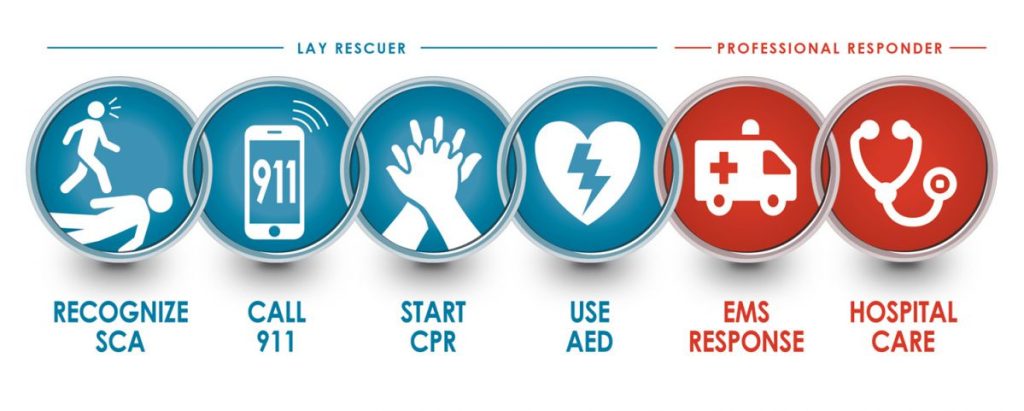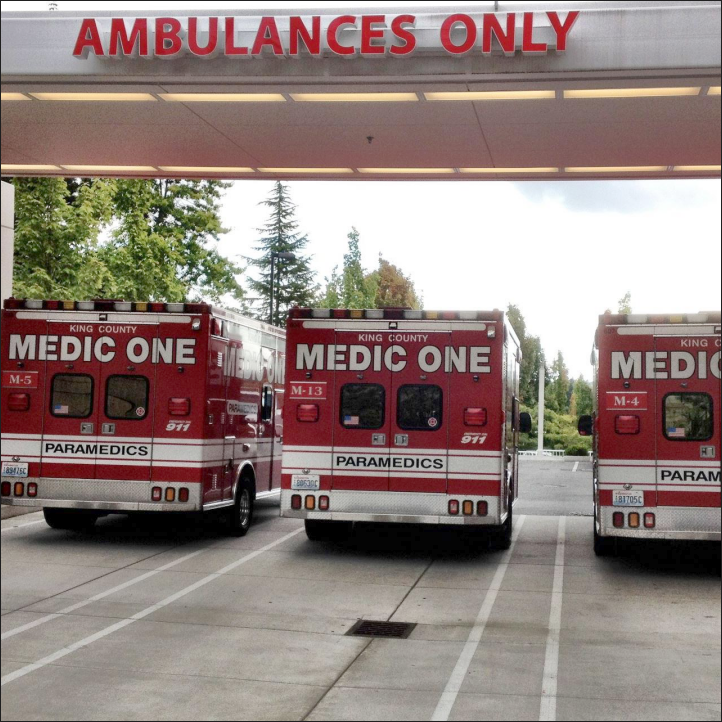Cardiac Arrest Chain of Survival
Published (updated: ).
It takes a village to bring people back from the dead

The 911 system was conceived in the 1960’s in response to the growing concern of civil unrest. It took nearly 50 years to get the nearly all of the United States access to this system. Why did it take 50 years? Because the 911 system is paid for through the telephone company. Emergency dispatch centers are funded by fees collected in monthly telephone bills. The sales pitch that made it all happen was the promise of bringing people who call 911 back from the dead.
When a patient’s heart stops beating, there is a very narrow window of opportunity to act (about 10 minutes). Properly performed chest compressions for 1 minute can result in blood flow to the body and must be continued without interruption for the entire cardiac arrest. For this reason, the public must be trained to recognize that a person is in cardiac arrest then access the 911 system.
Emergency dispatchers will send an ambulance and the fire department to the scene. The fire department often arrives at the patient’s side first, continuing CPR and applying the AED. The AED determines if the patient cardiac rhythm is shockable then delivers a countershock with the goal of converting the electrical impulses in the heart to a normal organized rhythm that is capable generating a pulse.
The ambulance arrives and usually continues CPR and other advanced care while enroute to the hospital. Sometimes the ambulance crew will request orders to terminate the arrest. With the ambulance comes the paramedic; the manifestation of the worlds greatest telecommunications sales pitch. The paramedic brings the ability to perform hospital quality interventions at the very spot where the patient was found.
It doesn’t matter who else shows up if nobody is performing adequate chest compressions.
King County Medic One

Founded in 1976, King County Medic One paramedics are trained by the world-renowned University of Washington / Harborview Medical Center / Seattle Fire Department paramedic training program.
The Medic One System is a concept of advanced medical care that was born in the early 1970s in Seattle and now covers all of King County. The system is known throughout the world as the best of its kind, not for the heroics of the staff, but for the active participation of the citizens of the region. The system literally begins and ends with the citizens of the community. Seattle and King County citizens have made the choice to be active participants in the lives of the people around them by helping their neighbor or loved one at the time of their greatest need.
The Medic One System requires citizens to be an active participants in the system by supporting it and by helping the people in our community by:
- Recognizing when a fellow citizen needs medical care.
- Calling 911 to activate the Medic One System.
- Helping a family member, or neighbor, until Medic One arrives.
The real difference in patient care is made in the first 10 minutes. The citizens make the first and greatest difference. This is a unique endeavor that would not work in other areas of the country. Unlike Atlanta, the culture and lifestyle of people in Seattle is dependent on their ability to look out for the well being of one another.
The first link in the “Chain of Survival” is access to the Enhanced 911 system. This system gives dispatchers the exact location and phone number of a 911 caller, speeding response and ensuring a response even if a caller cannot speak or does not know where they are. Citizen CPR is the second link in the “Chain of Survival”. Studies done by the Seattle Medic One System in the 1970s proved that a patient’s chances of surviving and “out of hospital” cardiac arrest are considerably increased if citizens trained in CPR begin rescue breathing and chest compressions immediately.
Basic Life Support (BLS) Medical Services are the third link in the “Chain of Survival”. BLS services in the Medic One System are provided by a network of Fire Departments throughout the county. One crucial BLS service provided by these departments is cardiac defibrillation. Defibrillation shocks a chaotic cardiac rhythm, without a pulse, back into a regular pulsing rhythm. Advanced Life Support (ALS) Medical Services are the fourth and final link of the “Chain of Survival”. ALS services bring a “mobile emergency room’ to the scene of an accident or illness. Paramedics in King County are some of the best in the world, but without the other three elements of the “Chain of Survival”, there is no Medic One System.
